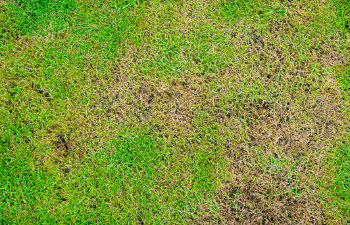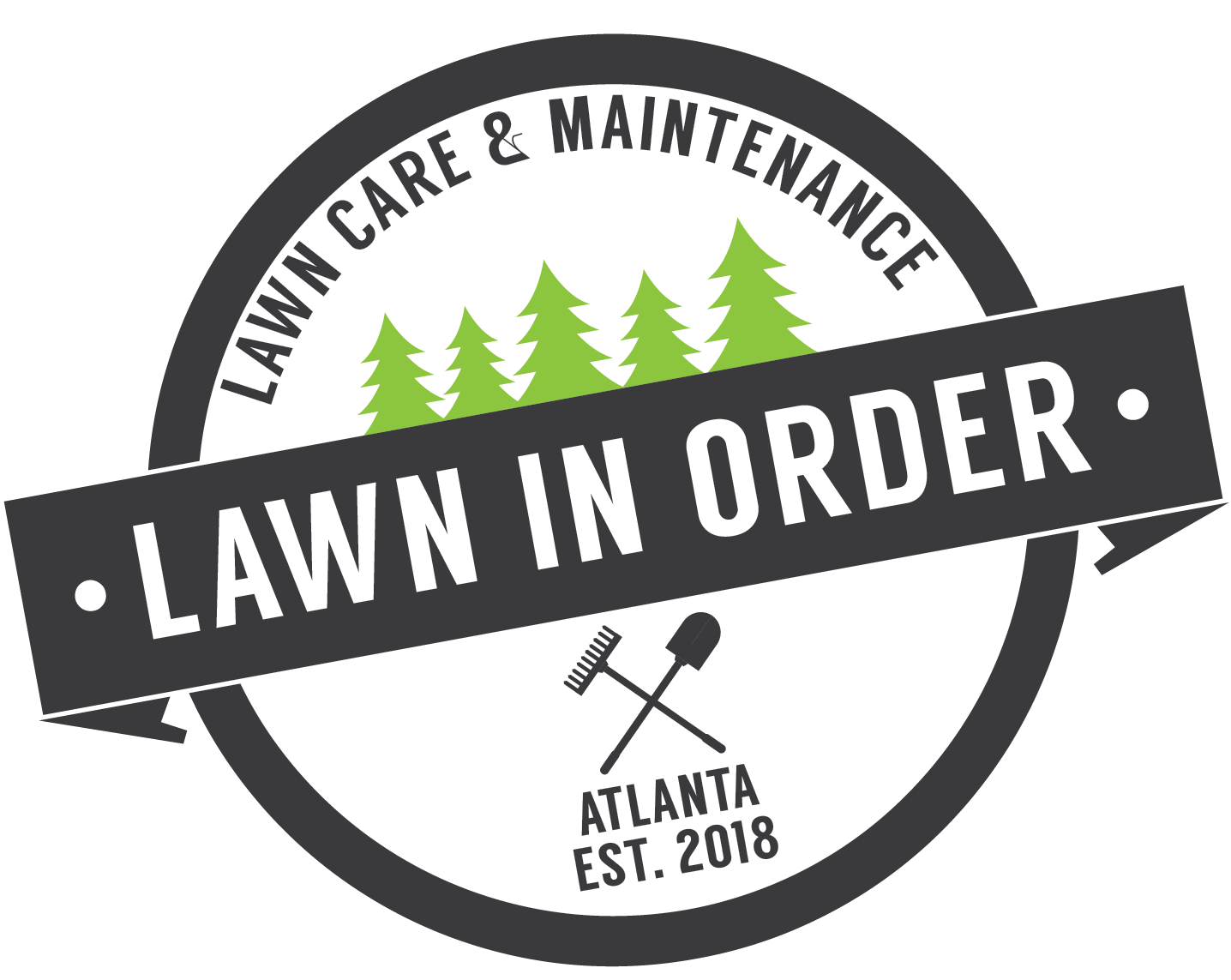
Georgia’s long, hot summers can transform lush green lawns into patchy, brown eyesores seemingly overnight. Lawn burn, also known as summer stress or heat scorch, affects thousands of Decatur and Druid Hills properties each year, leaving homeowners frustrated and wondering what went wrong. Understanding the science behind lawn burn and implementing proper prevention strategies can mean the difference between maintaining a beautiful lawn through Georgia’s challenging climate and watching your investment turn brown and brittle.
Research shows that Georgia’s combination of high temperatures, humidity, and irregular rainfall patterns creates conditions where 68% of lawns experience some degree of summer stress annually. For homeowners in the greater Decatur area who take pride in their outdoor spaces, understanding lawn burn causes and prevention is essential for maintaining property value and curb appeal year-round.
Understanding the Science of Lawn Burn
- Heat Stress Physiology: When soil temperatures exceed 85°F and air temperatures soar above 90°F for extended periods, grass plants struggle to maintain normal metabolic functions. The plant’s energy shifts from growth to survival mode, often resulting in dormancy or tissue death.
- Water Loss Acceleration: High temperatures increase evapotranspiration rates, causing grass to lose moisture faster than roots can absorb it from the soil. This creates a water deficit that manifests as brown, crispy patches throughout the lawn.
- Root System Strain: Excessive heat forces grass roots to work overtime trying to access water from deeper soil layers. When roots become stressed or damaged, the entire plant suffers, leading to widespread browning and potential permanent damage.
- Cellular Damage Mechanisms: Prolonged exposure to extreme heat can damage plant cell structures, disrupting chlorophyll production and causing the characteristic yellowing and browning associated with lawn burn.
Common Causes of Lawn Burn in Georgia
- Inadequate Watering Practices: The most frequent cause of lawn burn involves insufficient or improper watering. Many Decatur homeowners water too frequently with shallow amounts, encouraging shallow root development that can’t withstand drought stress.
- Poor Timing of Water Application: Watering during peak sun hours can actually intensify burning through a magnifying glass effect, while evening watering promotes fungal diseases. Optimal watering occurs in early morning hours between 4-8 AM.
- Fertilizer Burn: Over-application of nitrogen fertilizers during hot weather can cause chemical burns that appear similar to heat stress. This is particularly common when homeowners apply fertilizer without adequate watering or during drought conditions.
- Soil Compaction Issues: Compacted soil prevents proper water infiltration and root development, making grass more susceptible to heat stress. High-traffic areas and clay soils common in Georgia are particularly vulnerable.
Identifying Different Types of Lawn Burn
- Heat Scorch Patterns: True heat burn typically appears as widespread yellowing or browning that affects entire lawn areas uniformly, usually starting with the most exposed, sunny sections of the yard.
- Fertilizer Burn Characteristics: Chemical burn from over-fertilization creates distinct stripe patterns or concentrated brown spots where fertilizer was heavily applied, often with green grass immediately adjacent to damaged areas.
- Drought Stress Indicators: Water-related burning often appears first in elevated areas, slopes, or sections with poor soil drainage, creating patchy brown areas interspersed with healthier green grass.
- Disease vs. Burn Distinction: Fungal diseases may mimic burn symptoms but typically include circular patterns, unusual colorations, or fuzzy growth that distinguishes them from environmental stress damage.
Georgia Grass Types and Burn Susceptibility
- Bermuda Grass Resilience: Bermuda grass shows excellent heat tolerance but can still suffer from inadequate watering or extreme temperatures above 100°F. It typically recovers well from mild burning with proper care.
- Zoysia Grass Characteristics: Zoysia demonstrates good heat tolerance but grows slowly, making recovery from severe burning a lengthy process that may require professional intervention or overseeding.
- Fescue Vulnerability: Tall fescue, popular in North Georgia, is more susceptible to summer burning due to its cool-season nature, often requiring special care during peak summer months.
- St. Augustine Considerations: While heat-tolerant, St. Augustine grass can suffer from burning in poorly drained areas or when subjected to fertilizer over-application during hot weather.
Prevention Strategies for Decatur Lawns
- Deep, Infrequent Watering: Apply 1-1.5 inches of water per week in 2-3 deep watering sessions rather than daily light sprinkling. This encourages deep root development that better withstands heat stress.
- Morning Watering Protocol: Water between 4-8 AM to allow grass blades to dry before peak sun exposure while ensuring maximum water absorption before daily heat stress begins.
- Proper Mowing Height: Maintain grass at the higher end of recommended height ranges during summer months. Taller grass shades soil and root systems while providing more leaf surface for photosynthesis.
- Fertilizer Timing Adjustments: Avoid heavy nitrogen applications during peak summer heat. Apply slow-release fertilizers in early spring and fall when grass can better utilize nutrients without stress.
Soil Health and Burn Prevention
- Drainage Improvement: Address standing water issues and improve soil drainage through aeration, organic matter addition, or drainage system installation to prevent root stress and disease.
- Organic Matter Enhancement: Regular addition of compost or organic matter improves soil water retention and nutrient availability while supporting beneficial microbial activity that helps grass withstand stress.
- pH Balance Maintenance: Georgia soils often require lime applications to maintain optimal pH levels that allow grass to efficiently absorb nutrients and water, reducing burn susceptibility.
- Compaction Relief: Annual core aeration relieves soil compaction common in clay soils, allowing better water infiltration and root development that supports stress resistance.
Recovery Strategies for Burned Lawns
- Immediate Response: When burning occurs, increase watering frequency temporarily while reducing individual application amounts to help stressed grass recover without overwhelming damaged root systems.
- Gradual Recovery Support: Avoid aggressive treatments immediately after burning. Instead, focus on consistent moisture, light organic fertilization, and allowing grass time to recover naturally.
- Overseeding Considerations: Severely damaged areas may require overseeding, but timing is crucial. Wait until soil temperatures moderate in late summer or early fall for best germination success.
- Professional Assessment: Extensive burning may indicate underlying issues requiring professional diagnosis and treatment to prevent recurring problems in subsequent seasons.
Irrigation System Optimization
- Sprinkler Coverage Analysis: Ensure uniform water distribution across all lawn areas. Brown spots often indicate poor sprinkler coverage rather than disease or soil problems.
- Timer Programming: Program irrigation systems for early morning operation with sufficient duration to achieve deep water penetration without runoff or waste.
- Seasonal Adjustments: Modify watering schedules based on rainfall, temperature, and seasonal grass growth patterns rather than maintaining static year-round programs.
- Efficiency Improvements: Regular maintenance of irrigation components ensures optimal performance and prevents uneven watering that contributes to patchy burning.
Fertilizer Management in Hot Weather
- Slow-Release Formulations: Use slow-release nitrogen fertilizers that provide gradual nutrient release rather than quick-release products that can burn grass during hot weather.
- Application Timing: Apply fertilizers when temperatures are moderate and adequate moisture is available, typically early morning or evening during cooler periods.
- Watering After Application: Always water thoroughly after fertilizer application to dissolve granules and move nutrients into the soil, preventing surface burning.
- Dosage Accuracy: Follow recommended application rates precisely, as over-application during hot weather dramatically increases burning risk even with adequate watering.
Environmental Factors Specific to Decatur Area
- Clay Soil Challenges: Decatur’s prevalent clay soils retain moisture but can become compacted, creating drainage issues that stress grass during heavy rainfall followed by hot, dry periods.
- Microclimate Variations: Properties near trees, buildings, or slopes create microclimates with different moisture and temperature conditions requiring customized care approaches.
- Humidity Impact: Georgia’s high humidity can prevent grass from cooling through evapotranspiration while promoting fungal diseases that compound heat stress problems.
- Rainfall Patterns: Irregular summer rainfall common in North Georgia requires flexible irrigation management to supplement natural precipitation without over-watering.
Long-Term Lawn Health Strategies
- Stress Tolerance Building: Implement year-round practices that build grass resilience, including proper fertilization, regular aeration, and appropriate mowing to prepare lawns for summer stress.
- Variety Selection: Consider grass varieties specifically selected for Georgia’s climate when renovating or establishing new lawn areas, choosing heat and drought-tolerant options.
- Integrated Management: Combine proper cultural practices with environmental monitoring to create comprehensive lawn care programs that prevent rather than react to burning.
- Professional Partnerships: Regular professional lawn care services can provide expertise, proper equipment, and consistent care that prevents burning while maintaining optimal lawn health.
Technology and Monitoring Tools
- Soil Moisture Meters: Use soil moisture monitoring to determine actual watering needs rather than relying on visual cues or preset schedules that may be inadequate.
- Weather Station Integration: Smart irrigation controllers that adjust watering based on local weather conditions help prevent both drought stress and over-watering problems.
- Professional Assessment: Regular professional evaluations identify potential problems before they result in burning, allowing proactive treatment rather than reactive damage control.
- Documentation Systems: Keep records of watering, fertilization, and lawn conditions to identify patterns and optimize care strategies for your specific property.
Protect Your Decatur Lawn Investment
Don’t let Georgia’s challenging summer conditions turn your beautiful lawn into a brown, stressed landscape. At Lawn in Order, we understand the unique challenges facing Decatur and Druid Hills properties, and we provide expert lawn care services designed to prevent burning while maintaining the lush, green lawn you deserve. Our experienced team offers comprehensive lawn care solutions, including proper irrigation management, fertilization programs, and soil health improvement that keep your lawn thriving through Georgia’s hottest months. Contact us today to learn how our professional lawn care services can protect your property investment and ensure your outdoor space remains the envy of the neighborhood year-round.

